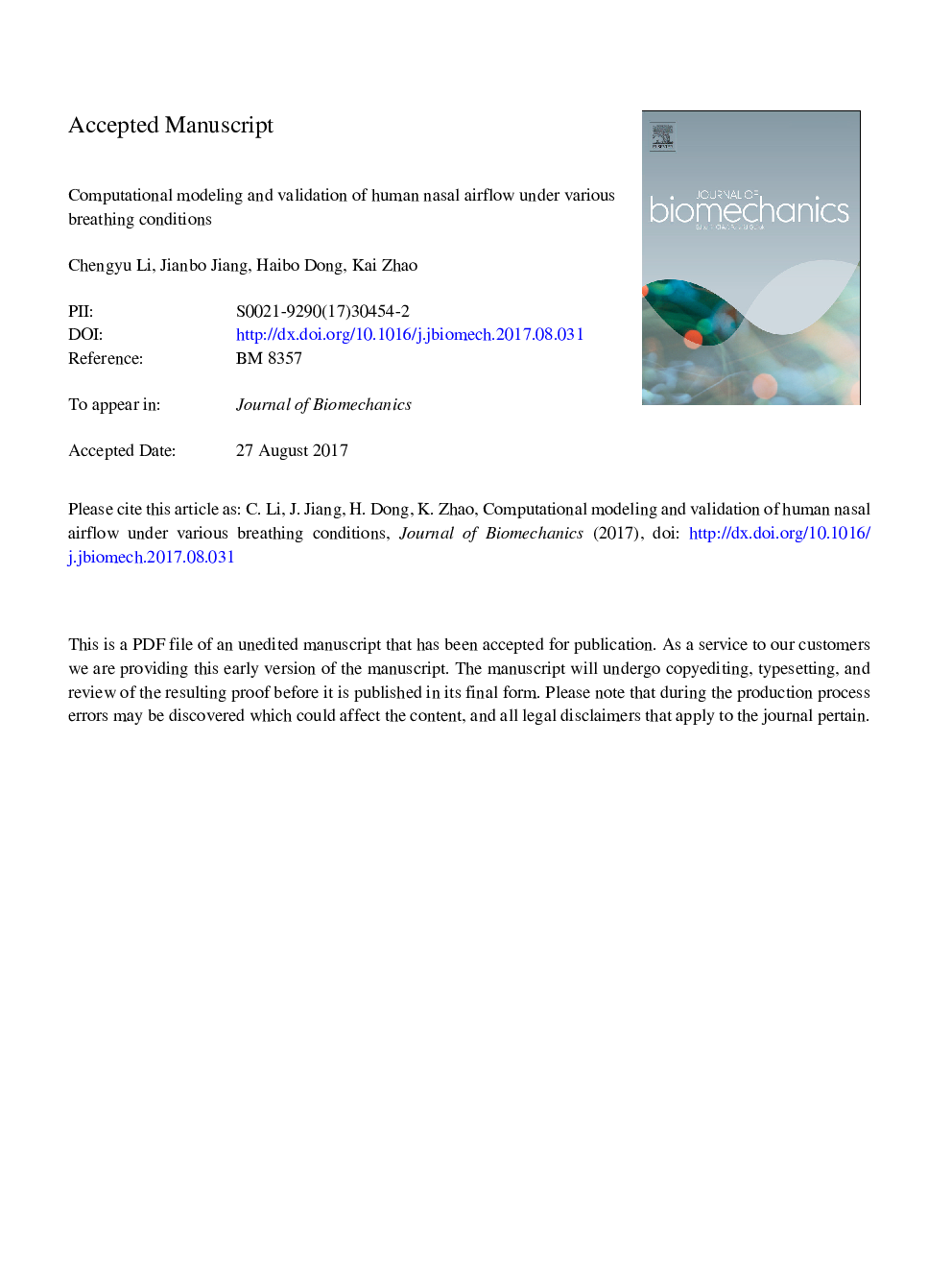| کد مقاله | کد نشریه | سال انتشار | مقاله انگلیسی | نسخه تمام متن |
|---|---|---|---|---|
| 7237006 | 1471100 | 2017 | 28 صفحه PDF | دانلود رایگان |
عنوان انگلیسی مقاله ISI
Computational modeling and validation of human nasal airflow under various breathing conditions
دانلود مقاله + سفارش ترجمه
دانلود مقاله ISI انگلیسی
رایگان برای ایرانیان
کلمات کلیدی
موضوعات مرتبط
مهندسی و علوم پایه
سایر رشته های مهندسی
مهندسی پزشکی
پیش نمایش صفحه اول مقاله

چکیده انگلیسی
The human nose serves vital physiological functions, including warming, filtration, humidification, and olfaction. These functions are based on transport phenomena that depend on nasal airflow patterns and turbulence. Accurate prediction of these airflow properties requires careful selection of computational fluid dynamics models and rigorous validation. The validation studies in the past have been limited by poor representations of the complex nasal geometry, lack of detailed airflow comparisons, and restricted ranges of flow rate. The objective of this study is to validate various numerical methods based on an anatomically accurate nasal model against published experimentally measured data under breathing flow rates from 180 to 1100 ml/s. The numerical results of velocity profiles and turbulence intensities were obtained using the laminar model, four widely used Reynolds-averaged Navier-Stokes (RANS) turbulence models (i.e., k-ε, standard k-Ï, Shear Stress Transport k-Ï, and Reynolds Stress Model), large eddy simulation (LES) model, and direct numerical simulation (DNS). It was found that, despite certain irregularity in the flow field, the laminar model achieved good agreement with experimental results under restful breathing condition (180 ml/s) and performed better than the RANS models. As the breathing flow rate increased, the RANS models achieved more accurate predictions but still performed worse than LES and DNS. As expected, LES and DNS can provide accurate predictions of the nasal airflow under all flow conditions but have an approximately 100-fold higher computational cost. Among all the RANS models tested, the standard k-Ï model agrees most closely with the experimental values in terms of velocity profile and turbulence intensity.
ناشر
Database: Elsevier - ScienceDirect (ساینس دایرکت)
Journal: Journal of Biomechanics - Volume 64, 7 November 2017, Pages 59-68
Journal: Journal of Biomechanics - Volume 64, 7 November 2017, Pages 59-68
نویسندگان
Chengyu Li, Jianbo Jiang, Haibo Dong, Kai Zhao,